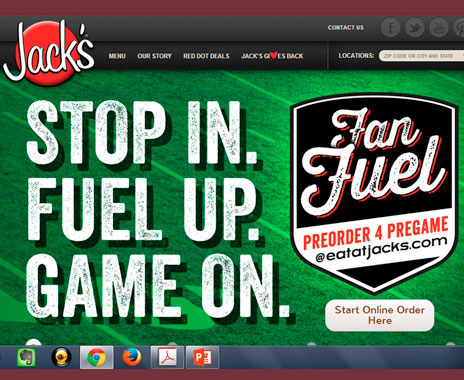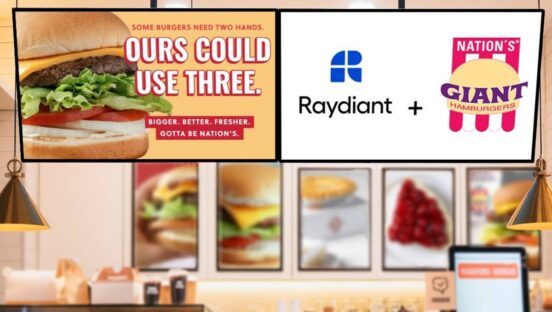Today’s restaurant consumers are increasingly tech savvy and interactive, and much of the quick-service industry has catered to their habits and preferences with the launch of online or mobile ordering tools.
Until recently, that did not include burger concepts, which have struggled to integrate online ordering into established cooking systems. Now, however, more burger joints are figuring out how to incorporate online ordering and are rolling out platforms to improve the overall customer experience.
Elevating that experience is exactly what is encouraging Mike Davidson, a Washington, D.C.–based restaurateur, to open Boltburgers, which he hopes to build into a chain of quick-service burger establishments. The first location, slated to open later this month, boasts in-store online ordering via kiosks and tablets for takeout or dine-in.
"The idea is that if you have already ordered your food and want something extra, you can order from the kiosk,” says Davidson, managing partner at Boltburgers.
With a full mobile site launching in a few weeks, consumers will also be able to order from phones, computers, and other off-site devices. While it may seem simple on the consumer end, Davidson says, there are many complexities to the electronic ordering system. The electronics need to interface with the point-of-sale system, he says, which can present quirks.
Group ordering is another consideration. “You have to have a way to have the order system split tickets,” Davidson says.
Jack’s, a burger concept with more than 120 locations across the Southeast, recently expanded its operations to make tailgating options available through online ordering. The chain claims to be the first burger quick serve to offer the service.
The “Preorder 4 Pregame” campaign, which launched in August, allows fans to preorder tailgating favorites from the company’s website. The clean, easy-to-navigate layout includes suggested serving sizes for groups starting at 10 people, according to a statement from the company.
Jack’s director of marketing, Pam Measel, says the online tickets skew higher in dollar amount than in-store transactions because they tend to be group orders.
To promote the new offering, Measel says, Jack’s employed a strategy that included radio spots and pre-game shows. It also used on-campus grassroots marketing in college towns.
The company is now looking into ways to adapt its online-ordering system to market trends. “You have to keep it fresh and constantly find new arenas to increase revenue streams,” Measel says.
Even McDonald’s is dipping its toes into the online-ordering waters. Earlier this year, the quick-serve giant tested a mobile application in Salt Lake City and Austin, Texas. The program allowed customers to place an order that they could pick up in-store, curbside, or through the drive thru.
The effort that goes into developing an online or mobile ordering platform has deterred several burger brands from jumping into the space. Davidson, whose team has been working on the technology for about six months, says quick-service operators should do their homework before investing in such a platform. It’s especially important to test each part of the system individually and collectively, he says, to ensure they all work together before the launch.
Similarly, Measel says operators should invest as much in staff training as they do technology. “You need to train staff and get them acclimated to the secondary way of ordering,” she says.
Darren Tristano, executive vice president of market research firm Technomic Inc., says mobile technology is the future of ordering. Over the past several years, applications and innovations have come on the market to enhance ordering and delivery efficiency, he says, and quick-service restaurants already have a reputation for convenience and high-speed service.
“This offers an opportunity to become even more convenient,” Tristano says, “especially for stores without drive thrus. The reality is, customers want that convenience.”
Tristano says the mobile and online ordering formats are a win-win. In addition to the convenience factor for the customer, he says, online ordering can maximize resources and profit; selling off-premise is a way to leverage the store’s square footage, while restaurants can also push out large orders without adding to overhead. He adds that there is also the possibility of a larger check, since customers often feed large groups with take-out orders.
But online ordering is only good as the technology behind it, Tristano says. “Give the app more value than the ability to order,” he says, adding that the app should be free, easily downloadable, and have the ability to securely store data like credit card information. “Make it easy for [customers] to walk in and walk out. Convenience is what quick serves are designed for.”
That element of convenience applies to the mobile application as well as the in-store interaction. Tristano says operators should put careful attention into the logistics of an online ordering platform, implementing things like dedicated parking spots and lines for takeout orders.
Above all, Tristano says, burger quick serves should not forget the original intent behind implementing this technology. “The customer experience should be the primary reason you’re doing this, and not to try to make more money,” he says.









